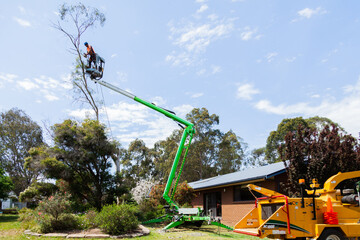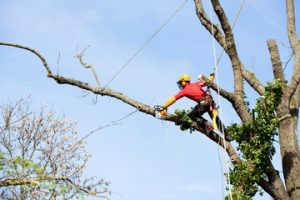
Trees are among the most valuable features of any property. They offer shade, enhance beauty, clean the air, and even increase property value. Yet, like any living thing, trees need proper care to stay healthy, safe, and attractive. This is where tree care service becomes essential. With the right attention, trees can thrive for decades, offering benefits for generations to come.
This article explores the importance of tree care service, its main components, and why investing in it is one of the best decisions for your outdoor space—all without mentioning specific names, brands, or places.
Why Tree Care Service Matters
Trees may seem self-sufficient, but urban and suburban environments can be tough on them. Limited root space, soil compaction, construction damage, pests, and changing weather patterns all pose risks. Without regular care, even strong trees can become weak, diseased, or hazardous.
Professional tree care helps by:
- Promoting healthy growth.
- Identifying and treating problems early.
- Improving the appearance of your property.
- Reducing the risk of falling branches or unstable trees.
- Extending the life span of trees.
Healthy trees are not only beautiful but also safer and more resilient.
Key Components of Tree Care Service
A complete tree care service addresses every aspect of a tree’s health and safety. Common services include:
- Pruning and trimming – Removing dead or overgrown branches improves structure, encourages new growth, and prevents hazards.
- Health assessments – Checking for signs of disease, decay, or pests allows early treatment and prevention.
- Soil and root care – Aerating soil, adding nutrients, or managing watering helps trees absorb what they need to thrive.
- Cabling and bracing – Supporting weak or split branches reduces the risk of breakage.
- Tree removal – When a tree is beyond saving or poses a danger, careful removal protects property and people.
Each of these steps contributes to a safer, healthier, and more appealing landscape.
The Benefits of Regular Pruning
Pruning is one of the most common and important tree care tasks. Done correctly, it:
- Improves tree shape and appearance.
- Encourages strong structure by removing weak or crossing branches.
- Increases sunlight and airflow within the canopy.
- Reduces the risk of falling branches during storms.
Improper pruning, however, can harm a tree. This is why professional service, with proper techniques and timing, is critical.
Identifying and Treating Tree Health Issues
Trees can suffer from a range of problems—fungal infections, insect infestations, nutrient deficiencies, or physical injuries. Many of these issues are invisible to the untrained eye until damage is severe.
Tree care professionals use their knowledge to spot subtle signs of stress, such as discolored leaves, cracks in the trunk, or unusual growth patterns. Early detection allows for targeted treatments that can save the tree and prevent problems from spreading to others.
Soil and Root Management
Healthy soil is the foundation of a healthy tree. In many developed areas, soil can become compacted or depleted of nutrients. Tree care services can help by:
- Loosening compacted soil to improve root oxygenation.
- Adding fertilizers or organic matter to replenish nutrients.
- Managing watering schedules to avoid drought stress or waterlogging.
Strong roots mean stronger, more stable trees that can withstand storms and environmental stress.
Safety Considerations
One of the most overlooked reasons for tree care service is safety. Overhanging or dead branches can fall without warning, causing property damage or injury. Trees with hidden decay or weak root systems may also topple during strong winds.
Routine inspections and maintenance reduce these risks dramatically. By addressing potential hazards early, tree care professionals protect both people and property.
The Role of Tree Removal
While the goal is always to preserve and nurture trees, sometimes removal is necessary. Dead, diseased, or dangerously unstable trees can threaten nearby structures, power lines, or other trees.
Professional tree removal ensures the job is done safely and efficiently. It also includes proper disposal of debris and, if desired, advice on replacement planting to maintain the landscape’s balance.
Enhancing Property Value and Beauty
Well-maintained trees add instant curb appeal. A healthy, attractive tree canopy can make a property stand out and even increase its market value. Conversely, neglected or hazardous trees can have the opposite effect, making a property look unkempt and posing potential liabilities.
Investing in tree care service is not just about maintenance—it’s about enhancing the beauty and value of your entire property.
Environmental Benefits
Caring for trees benefits more than just your yard. Healthy trees improve air quality, reduce stormwater runoff, provide wildlife habitat, and moderate temperatures by creating shade. In this way, tree care service contributes to a healthier environment and community as well.
When to Schedule Tree Care
Timing matters in tree care. While some tasks, like emergency removals, are done year-round, other services are more effective in specific seasons. For example, pruning certain species during dormancy can reduce stress and improve healing.
Regular inspections, at least once a year, can catch issues early. Many property owners schedule tree care services before storm seasons to minimize hazards.
Choosing the Right Tree Care Approach
Every property and tree is unique. Factors like tree species, age, location, and local climate influence what care is needed. A customized tree care plan ensures that each tree receives the attention it requires, rather than a one-size-fits-all approach.
This individualized care promotes healthier, longer-lived trees and maximizes the benefits they bring.
Tips for Supporting Tree Health Between Services
Homeowners can also play a role in tree health by:
- Watering deeply during dry spells.
- Avoiding damage to trunks and roots from lawn equipment.
- Mulching around the base to conserve moisture and regulate soil temperature (but keeping mulch away from direct trunk contact).
- Monitoring for pests or unusual changes and calling for help early.
These small actions, combined with professional care, can make a big difference.
Investing in the Future
Trees take years to mature, but can be lost quickly without proper care. By investing in tree care service, you’re investing in the future beauty, safety, and value of your property. Healthy trees also give back to the environment, providing shade, oxygen, and habitats that benefit everyone.
A strong, thriving tree canopy is not just a backdrop for your home or business—it’s a living asset. With the right care, your trees can continue to grow, flourish, and enrich your surroundings for decades.
